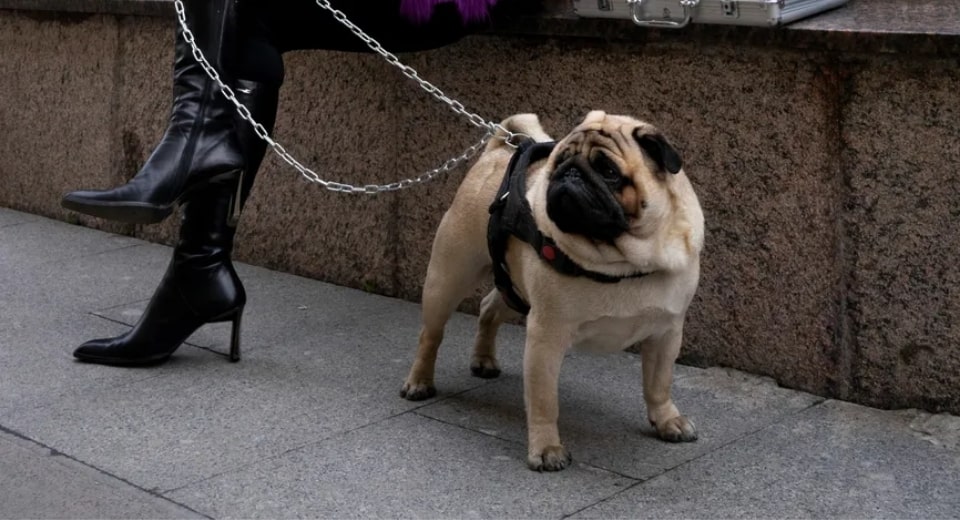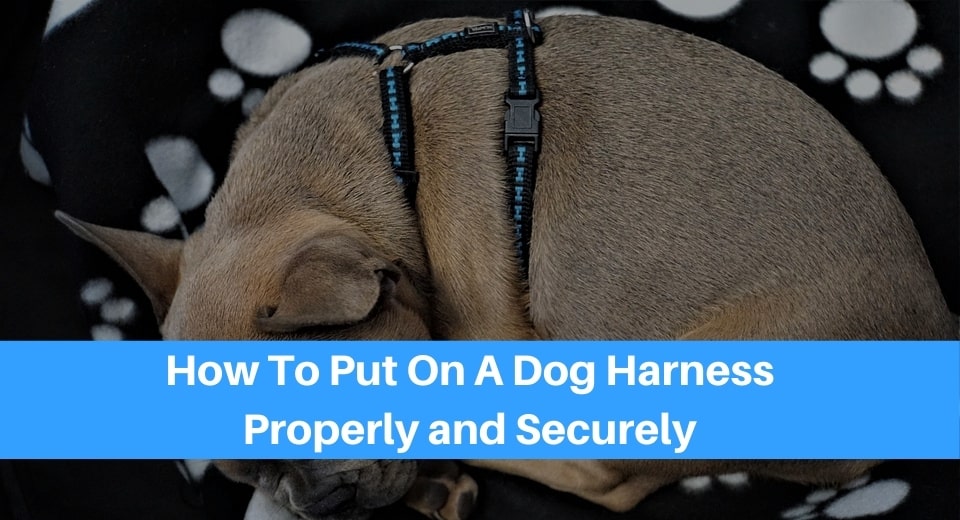A dog harness is the superior and safer option to a dog collar. A dog collar is used for identification purposes, and should only be used for that in our opinion. If you have ever attempted to walk your dog with a collar, you will know it chokes him and if he struggles against it hard enough, it could injure his trachea. Dogs are beloved members of our family and hurting them is the last thing we want to do. So now that we have decided to go with the harness option, how do we put it on our dog and how many types are there to choose from? Let’s take a look.
Things You Should Know About Dog Harnesses

Types of Dog Harnesses
There are different types of harnesses for different purposes, needs, and breeds. Looking at factors such as your dog’s temperament, and health.
Standard Dog Harness
This option is the most basic design. It consists of a loop that wraps around your dog’s ribs and one around the neck. The leash ring is typically located on the back. The standard dog harness is usually made from nylon and is easy to adjust.
- It’s the easiest to slip this on your dog if you do it from behind.
- Bring him to a standing position and slip the harness over your dog’s head with the D ring positioned on the back.
- Gently bring your one of your dog’s legs through the first leg hole.
- The next step is to buckle the harness so the other leg is within the hole.
- The last step is to adjust the straps. The proper amount of room to leave on a collar or harness is enough for two of your fingers.
- You need to also make sure that your dog can’t escape through the back. You can do this by trying to pull the harness up over his head to ensure security.
Step-In Dog Harness
Similar to the standard harness, the step-in dog harness is actually much easier to put on. There are holes for your dog to “step-into” and for you to fasten the harness with the buckle usually located on the back. The straps are also adjustable for a more comfortable fit.
- This is easier because you don’t need to lift your dog up, just place the harness on the ground flat.
- Place your dog’s front paws into the leg holes.
- Pick up the buckle and clip together on your dog’s back.
- The last step is to adjust it and to also try to pull it over your dog’s head to make sure it’s the proper fit.

Front Clip Harness
These are also known as the anti-pull harnesses and is also used for training purposes. You can check our 7 best harness picks to control dog pulling if this is what you need.The difference is the leash clip is in front of your dog’s chest. A lot of front clip harnesses come in the same style as the previous two options. If so, just follow those steps to secure it around your dog.
If your front clip harness is different you can fasten it on your dog by following the steps below.
- Place the loop of the harness over your dog’s head so the metal ring is positioned on the center of the chest.
- Then fasten the strap under your dog’s belly.
- The last step is always to adjust accordingly.
Overhead Harness
They usually come with more padding, you will find them in neoprene and breathable mesh material among others. They are much more comfortable and also come in many colors and designs. The overhead harness also reduces the chance of escape.
- To put on an overhead harness, slip it over your dog’s head just as the name suggests.
- Clip the buckles that go around the girth of your dog’s chest/belly.
- Last but not least, adjust it and make sure it’s a comfortable fit.
How to Adjust a Dog Harness
As mentioned before, make sure you can slip two fingers between the straps. When you adjust it by using the buckles, make sure you adjust it on both sides so the fit is even. If one side is looser or tighter than the other, it breeds more risk of escape.
If you have a growing puppy, it’s advised not to get a harness that fits just right. It’s optimal to purchase one that he can grow into, therefore it needs to be adjustable.
The weight will fluctuate on dogs who exercise a lot or for working canines. Remember that a dog’s weight isn’t permanent. A pregnant mother, a puppy, an elderly dog, a sick dog, and overweight dogs can experience weight loss and weight gain. Make sure you check the straps regularly to make sure it’s the right fit.
If the straps are too tight, it not only limits movement, but it can cut into your dog causing chafing and burns and rashes. If the fit is too loose, the harness is pointless and before you know it you will be chasing after your dog.
Here’s how to measure a dog for a harness the right way if you don’t know how.
Dog Harness VS Dog Collar
Since a dog harness causes less harm and trauma to your dog, we would always suggest a dog harness over a collar for walks. Refer to the collar more as an ID tag that can be worn simultaneously with the harness. If your dog is prone to pulling and trying to escape, the overhead padded collars are your best bet.

Conclusion
Knowing how to put a dog harness on is vital to the security of your dog. Especially if you have a large dog with tons of energy, you need to know how to properly secure him for comfort and safety. Adjusting it properly will also make for a better fit and decrease the risk of your dog escaping. Whichever one you decide to get, make sure to introduce it slowly, with plenty of treats, praise and positive reinforcement. A harness is an important tool to have in your dog care arsenal so make sure you buy the right one!

